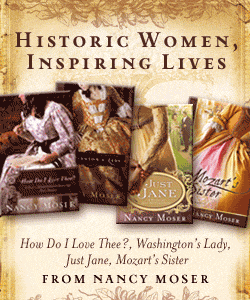|
I
was skeptical.
Driving through the vast expanse
of New Mexico, all I saw were the endless stretches of brush and
dryness. I was used to the lush greenness of grass and towering trees.
As we entered Ghost Ranch (where
I was going to teach a fiction class), the adobe architecture did
nothing to impress me. The buildings were low to the ground, squatting
at the bottom of the rocky bluffs at their backs. Blah, without
ornament or interest. When I discovered that the adobe house I would be
staying at with ten or so other faculty was over two miles from the
ranch, isolated off a dusty road, in the middle of nowhere, I braced
myself to endure, not to enjoy, the setting.
But then it happened.
The next morning, everything
changed.
When I went outside that first
morning, the sky demanded my attention and lured me away from the house
for a better view. I walked onto that dusty ground and into the desert.
The sunrise seemed to be holding
a contest between blue and pink to determine which color could be king
for the moment. The definition of “azure sky” was broadcast right there
before me.
The layers of mountains and
buttes in the distance had also chosen their colors with great care, as
each layer revealed a different shade of steel blue against gray,
against lighter gray; silhouettes without detail, as if an artist had
created them with a single brushstroke.
And then I saw that the rock
formations on the mountain behind me had transformed from barren crags
to glowing sculptures as the rising sun illuminated myriad colors: red,
orange, gold, and brown.
As for the adobe house, it was
crouched low amid the rising rocks as it had been the day before. But
this morning I saw it with new eyes. No, it was not a striking piece of
architecture to be admired for what man had accomplished, but rather it
was a structure formed with rounded edges, its surface the color of the
earth that had birthed it. It did not compete with the landscape but
rather was one with the land—the land that had been there first.
I walked farther away from the
house. The crackle of sagebrush and low plants beneath my feet shouted
against the silence. I watched the rusty color of the dirt powder my
black shoes, letting me know that it was I who was the intruder.
A
few more steps and
I reached a
spot where I felt both the weight and the freedom of complete solitude.
At that moment, no one else in the entire world was where I was—perhaps
no
|
one
in the entire world had ever been there. I
shivered at the thought and let the silence wrap around me like a
whirling wind taking me captive.
And then I knew without a doubt
that God was there with me.
And in that morning silence,
with my heart softened, my attitude quelled, and my mind open, God
spoke to me.
And this I made also.
I repeated the phrase in a
whisper, letting its meaning find root.
Then I cried in awe and in
humility. Who was I to judge God’s handiwork against my mortal
standards of what I liked or preferred? I turned
full circle, shaking my head in wonder at the beauty all around
me—beauty God had made.
The rest of the world fell away.
The crises, the troubles, the sins, and the sinners. For in those few
minutes in the morning, God had taken time to set this one sinner
straight. He had painted the sky just for me and made the air cool and
still so I could hear His murmurings. And He had quieted my heart,
subdued my arrogant pride, and given me a few intimate moments in His
total care.
As the busyness of the day
demanded my attention, and as the time to leave that place in the
desert finally came upon me, I left with a wistful heart. Yet it was a
heart open to the truth He had given me—a truth I will use amid
mountains and cities, lakesides and meadows, in darkness and in light.
And this I made also.
O LORD, our LORD, how majestic
is your name in all the earth! (Ps. 8: 9 NIV).

|